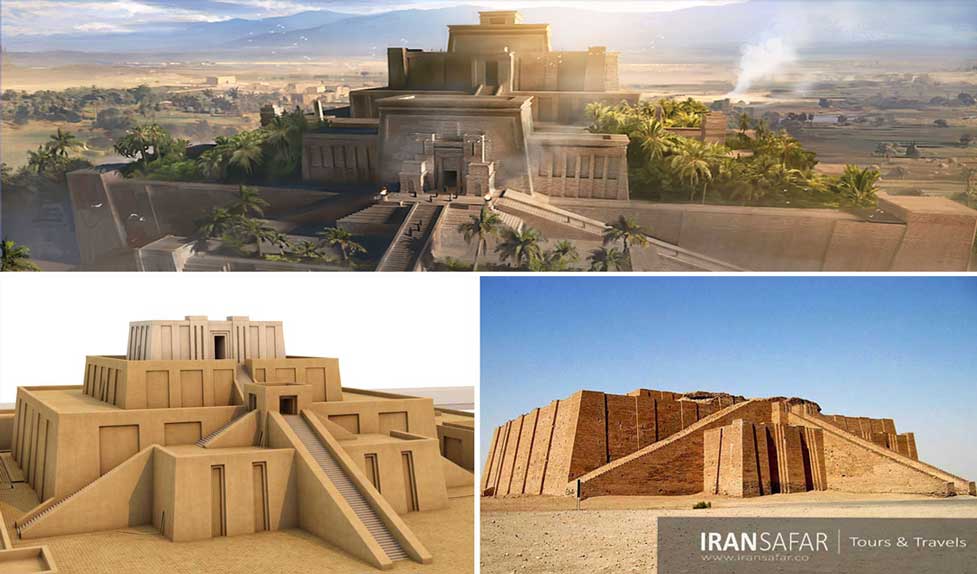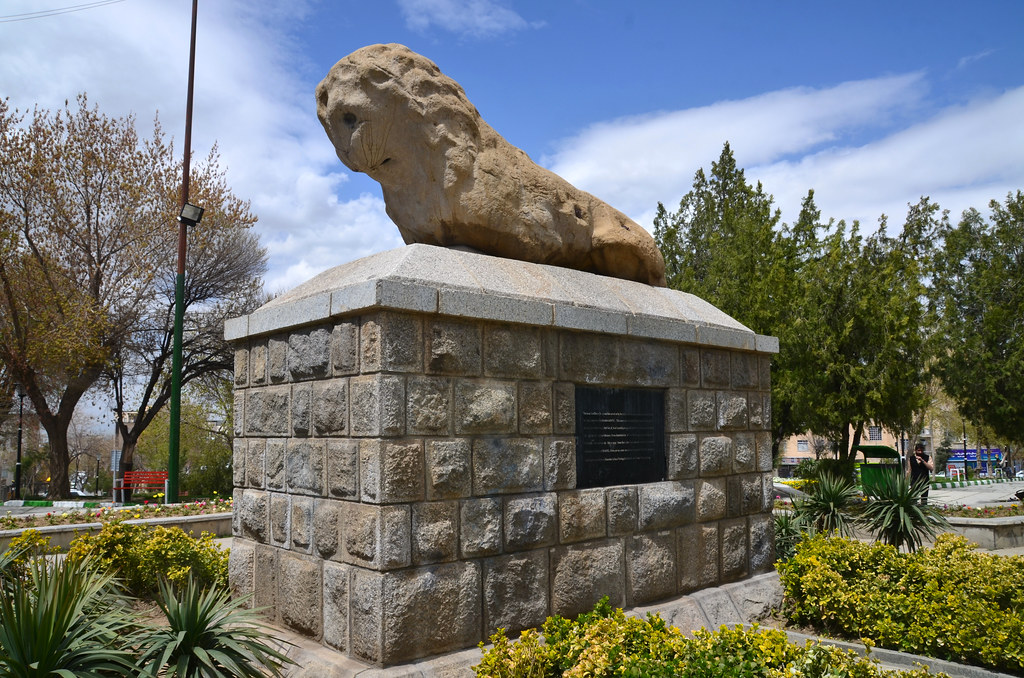
Cuneiform Tablets, the Magi, and the Star of Bethlehem
The August Blog of 2023 builds upon the last couple of articles we have posted, as it expands on Daniel’s use of the Babylonian Star Dairies as a tool to teach the Magi about the celestial signs in line with the Biblical Messianic Prophecies that would predict the birth of Christ. God did not leave Himself without witness of His only begotten Son-Jesus Christ, not only in Scripture but also in the Gospel of the Stars even as His promises to Abraham linked to the Celestial Gospels. God’s master-plan of redemption was known to mankind long before it was written in human script, even as the Messiah-the Lion of the tribe of Judah–Abraham’s grandson, was prophesied in Leo, [Gen. 15:5, 49:8-10]. This month’s study reveals an ancient Babylonian Cuneiform tablet that appeared in the period of Daniel’s leadership in the royal courts over the Magi in Babylon and Persia. We will review some of the traits of what I have termed the Celestial Prelude, as the celestial signs that led up to the birth of Christ, which allowed the Magi to recognize and correctly identify the stars of the Messiah’s birth.
God’s plan to rescue humanity is embodied in Jesus Christ, the only begotten Son of God, and his birth was connected with and prophesied in the stars. The Star Gospel as found in the Old Testament, or for Judaism in the Tanakh, long foretold his birth, ministry, death, resurrection and ascension. Following the rise of ancient Babylon, the forces of king Nebuchadnezzar conquered Judah, the southern kingdom of Israel in 604 BC, and led most of its key people in captivity to Babylon. Among the exiles was a group of gifted and intelligent young men with their leader named Daniel. After distinguishing himself by first accurately revealing king Nebuchadnezzar’s dream, and then interpreting it for him, he was rewarded with a high seat in Babylon’s royal court, that included key governmental authority, where he was made chief over all the magicians, soothsayers, and wise men of Babylon. This put Daniel and his friends in key positions to influence many royal decrees that descended, not only from Nebuchadnezzar, but many of the subsequent Kings including Cyrus, during their lifetimes. As we have seen, the Babylonians were already renown in history for their study of the stars both from a perspective of science and symbolism. With the rise of Daniel and his team, their view of Scripture and Messianic prophecy influenced the royal court, regarding the coming Christ. Having the Babylonian Star Diaries, the cuneiform clay tablets at his disposal, provided valuable resources for his work in identifying and accurately teaching the Magi the celestial signs to look for, that led to the birth of Christ.
Figure 1. Old Persian cuneiform syllabary From the Tomb of Darius.
(circa 500 BC)

Daniel’s knowledge of the Gospel in the Stars not only enlightened his view of the OT Prophecies of Christ, but also provided the special insight needed to teach these key truths to the Zoroastrian Magi, whose monotheistic religion also influenced King Cyrus, as one of the most enlightened leaders in history. Daniel’s knowledge of the Gospel in the Stars was closer to the Bible Patriarchs like Noah, since it was a throwback to the initial revelation of what was first given, later corrupted in the practices of astrology and divination, rooted and further developed in Babylon. As in modern times, astrologers cast their horoscopes, while many believe that the stars fatalistically control one’s destiny. But Daniel, preserved the Tanakh, and developed his own order of scholar-disciples committed to his teaching, based on the truth of Scripture, not to include astrology or other kinds of divination, as they were strictly forbidden in the Hebrew Scriptures. Daniel spent all his adult life in Babylon and later in Persia as a high official of the kings he served, while never wavering from his true service for the One true God. When the Prophet Daniel was carried off in captivity to Babylon, it was the result of one of 27 sieges of Jerusalem in Israel, the first destroyed by Nebuchadnezzar, who burnt the Temple in 587-586 BC, [2 Chron. 36:17-20], the 2nd in 69-70 AD, by Titus’ of Rome who also burnt the Temple.
In a recent study by John Wee, he provides examples of the “five major scholarly disciplines in the Assyrian Court” that provide insight into the scene that confronted Daniel in the Courts of Babylon and Persia, in his oversight of the professional court astronomers and Magi.
I Scribal Learning, Commentaries, and the Lamentation Priest
“The profession and its texts become more illuminated from the late Neo-Assyrian period, especially during the reigns of Esarhaddon (680–669 BC) and his son Assurbanipal (668–c. 627 BC), two monarchs who displayed particular interest in cuneiform scholarship and in celestial and other kinds of divinatory lore. Assurbanipal boasted that he “wrote on tablets the wisdom of the god Ea, the Lamentation arts,” and compiled a catalog (4R 53) listing individual liturgies ascribed to Lamentation priests. As one of the five major scholarly disciplines in the Assyrian court, the kalû (“lamentation priest”) stood along-side the āšipu (“magician / exorcist”), bārû (“haruspex /diviner”), ṭupšarru or ṭupšar Enūma Anu Enlil (“scribe /astronomer”), and asû (“physician”). Compound terms such as kalûtu or āšipūtu designated the “arts” or expertise of each profession, denoting not merely skills or proficiencies in the abstract, but also cuneiform text corpora associated with the profession. Different professions operated in ways that complemented each other. Chief kalûs like Urad-Ea and his son and successor Nabû-zēru-iddina belonged to the Assyrian king’s inner circle, and regularly wrote letters to the king concerning festival observances and kettle-drum performances before planets & gods. Other occasions, however, called for their participation in joint rites with the cooperation of court magicians. One Lamentation priest of some stature was Marduk-šāpik-zēriwho, even when (temporarily?) out of favor with the king, was influential enough to gather various professionals and apprentices under his auspices, including magicians, haruspices, physicians, astronomers, and other Lamentation priests (SAA 10, 160 obv. 47 – rev. 37). The details of his educational credentials are worth citing at length:” #1
In the reference from John Wee below we find these priests were groomed in families as they learned the “arts” of their profession from their fathers in service to the King, that included being well “read” (šitassû) in “the arts of the magician and of the astronomer” or the astronomical omen series Enūma Anu Enlil. Enlil, … I have observed the stars of the sky. I have read Šummaizbu, [Kataduqqû], Alamdimmû, Nigdimdimmû, […], Šummaālu. I learned … Under the protection of the king my lord, I have fulfilled … and … I am competent in my father’s duty”. The list of achievements is impressive, including ritual performance and recitation, observances of “healthy (and) sick flesh” that may be medical in nature, and various text series on astronomical omens (Enūma Anu Enlil), omens from birth anomalies (Šumma izbu, or abbr. Izbu), omens from human physiognomy (Alamdimmû, etc.) and speech (Kataduqqû), and omens from various terrestrial experiences and encounters (Šumma ālu, or abbr. Ālu). The juxtaposition of professional arts and text series, which we see in Marduk-šāpik-zēri’s résumé, occurs also in a catalog (K 2248) from Assurbanipal’s famous library at Nineveh: “[The arts of the magician], the arts of the lamentation priest, Enūma Anu Enlil, Alamdimmû, Šumma izbu (written Sa-gig, Katadugga, Lugal-e (the myth of Ninurta’s Exploits) and An-gim dím-ma (the myth of Ninurta’s Return to Nippur). These are from the mouth of the god Ea.” #2
These Astronomer-Priests needed also to be experts in the arts of celestial calculation related to planetary movements mapped and recorded in celestial time and space resulting from their direct observation. It is reasonable that Daniel and his friends were trained in some of these skills prior to the Babylonian Captivity, and brought some of this training to the courts of Babylon from Israel. For Lamentation priests, in particular, their responsibility for rituals before planets imply existing concerns for maps of celestial time and space, and suggested motivations for developing or at least keeping up to date with astronomical ideas and methods.
Illustrating the value put on celestial prediction, Lamentation priests of the Ebabbar temple in the Neo-Babylonian city of Larsa performed a kettledrum ritual in anticipation of a lunar eclipse, which was likely based on knowledge of the Saros cycle, but which ended up actually not happening due to cumulative errors in calculation. Beaulieu (2000,12f.) has noted that, among cuneiform tablets owned or copied by descendants of Sîn-lēqi-unninni, “the largest group consists of astronomical texts,” “the second group consists of copies of rituals which were performed by the kalû priests,” …” Indeed, Lamentation priests (kalûs) of the Sîn-lēqi-unninni family and magicians (āšipus) of the Ekur-zākir family appear to account for all astronomical tablets from Seleucid Uruk, and individuals from both groups were sometimes designated ṭupšar Enūma Anu Enlil (“astronomer”). In contrast to the distinct office of “astronomer” in the late Neo-Assyrian court, the title “astronomer” became employed in much more restricted contexts in the Achaemenid and Seleucid periods, with magicians and especially Lamentation priests engaged in astronomical scholarship and occasionally adopting the title itself. The expanded roles of lamentation priest and magician could be attributed to professional ties to Babylonian temples and temple institutions, which grew in importance as patrons of traditional cuneiform scholarship under Persian and Hellenistic rule.” #3 Daniel’s influence however, would have included an emphasis in the astronomical arts and studies in reading and interpreting the actual stars and their movements for the genuine Magi, as opposed to the astrological rituals linked to observances of “cultic magic.”
The importance of the acquisition of Cuneiform texts by these scribes was one of their duties to expand the holdings of the king’s libraries, which kept the scribes busy amongst all their other scribal obligations. “In yet another letter sent to the city of Borsippa, the king listed in detail specific titles of cuneiform works to be acquired, demanding that his scholars seek out “rare tablets that are known to you, but are not in Assyria.” As these letters suggest, the king’s agents were expected to be broadly versed in cuneiform scholarship, so as to be competent enough to recognize new or innovative compositions, to accurately copy tablets of different genres, and to categorize them according to the needs of the library. Assyrian library records, for example, show that “two (exemplars) of kalûtu” were in fact donated not by a Lamentation priest, but by one “Arrabu the magician.” This and other frequent dissonances between texts and professions led Parpola (1983, 8f.) to conclude that “the texts listed for them [i.e., the different tablet contributors] do not represent their entire private libraries but rather only that part of it which they did not need in their professional work.” In fact, the ownership (and donation) of kalûtu tablets by Arrabu the magician seems merely reflective of the way professional boundaries mapped uneasily onto the boundaries of text ownership and expertise.”#4
In this light it is logical that Daniel would have had his priest-team looking out for any cuneiform texts that would fit the traits of the Messianic prophecies of the coming Hebrew Savior-King, and that these scribes were expert enough to read these texts and identify the Messianic traits that fit the case. Daniel’s responsibilities would have included the oversight and pairing of Kings with Scholar-scribes, where he could not only steer his research in a direction that would advance the cause of the genuine Magi, but also maximize relations between his team and the ruling monarch.
A sense of the kinds of tablets owned and copied by Lamentation priests may be obtained from the excavated library in the south-east gate-building (area Le XVI3) of the Bīt rēš, the temple of the god Anu in Seleucid Uruk. The 170 or so cuneiform tablets of this library date to 192–162 BC and belonged to Anu-bēlšunu and his family of kalûs who claimed descent from Sîn-lēqi-unninni. “Also from this library is the famous “List of Kings and Sages/Scholars” (BagM Beih. 2, 89) that pairs kings with sages (apkallu) or scholars (ummânu) in (mostly) one-to-one fashion, implying that scholars in later times were the intellectual successors of the antediluvian sages. Astronomical texts here include omens and commentaries on the series Enūma Anu Enlil (BagM Beih. 2, 76. 80), other celestial omens (BagM Beih. 2, 75), horoscopes (BagMBeih. 2, 81–82 and 106; NCBT 1231), an astronomical almanac (BagM Beih. 2, 83), a Calendar Text (BagMBeih. 2, 79; Wee 2016b, esp. 182), a GDBT-type text (BagMBeih. 2, 78), as well as various planetary texts, ephemerides, diaries, and other records on the positions of celestial bodies.”#5 The records we are sourcing of Babylonian star diaries and cuneiform texts, fall in the 400-year period, part of when Daniel’s oversight of the Royal Court Magi in the Babylonian and Persian empires, occurred from mid-6th century BC to the mid-2nd century BC. This would have encompassed not only Daniel’s entire adult life, but also the key Magi mentored and influenced by him for centuries.
In the reference from Rochberg below, we find the ancient idea of a Gospel in the Stars, or constellations were “Heavenly Writing” millennia in advance of Rolleston, was not only basic content in Cuneiform Tablets, but also functioned as a kind of “Rosetta Stone” lexicon in translating the dead language of Sumerian into Akkadian used in Babylon.
The first of these Mesopotamian astronomical precepts is found in texts stating that the starry sky depicted [sitirti samami, sitir same, or sitir burume], “heavenly writing“—literally a hallowed cuneiform text inscribed by the star-gods themselves, (CAD 17/pt.3, p. 144; Rochberg, 2004, pp. 64, 163, 294, 299; Rochberg-Halton, 1988, p. 15 n. 54; von Soden, 1981, III, 1253, sitru, lexical section). This accords with the title of the Babylonian astrologer: tupsarru, “writer, scribe,”—an expert who read the sacred “writing” of the celestial sky for signs of future earthly events to be avoided or exploited (Brown D., 2000, pp. 33-36; Rochberg, 2004, pp. 41, 45, 71, 219; CAD 19, pp. 152-153, tupsarru). The concept is summarized by Francesca Rochberg, “The metaphor may be interpreted to express the idea that a written message was encoded in the sky, and that the message was a form of communication from the gods. #6
Hence, Babylonian Astronomers/astrologers were adroit grammarians proficient at reading and writing in the highly complex cuneiform writing system; a task that included mastery of their spoken tongue, Akkadian, as well as proficiency in the reading and writing of Sumerian, which was the “dead” language of the southern Mesopotamian people from whom the Akkadian-speaking Babylonians adopted the cuneiform script. Babylonian astrologers‘ knowledge of Sumerian is visible in their study of the Sumerian-Akkadian “dictionaries,” a point evinced by the list of texts edited by astrologers serving the Assyrian king, Esarhaddon (Lambert, 1976, pp. 313-318; Rochberg, 2004, p. 211). The circa 1800-1600 BC Sumerian-Akkadian “dictionaries” listed a Sumerian logogram beside its Akkadian meaning; a Sumerian logogram consisting of a cuneiform sign or sign grouping for a Sumerian word, which was then used to represent an Akkadian word with the equivalent meaning (Huehnergard, 1997, pp. 107-111). Pertinent to the current article is that these Sumerian-Akkadian dictionaries were an essential resource to the astrologer (Lambert, 1976, pp. 313-318; Rochberg, 2004, pp. 209-236). And Mesopotamian and Hellenic scholars were translating these Sumerian-Akkadian dictionaries into Greek in the late first century AD, a time contemporaneous with the writing of the Gospels (Geller, 1997, pp. 6495; Sollberger, 1962, pp. 63-72). The Sumerian-Akkadian dictionaries illustrate that the cuneiform writing system was predisposed to an astounding level of polysemy, i.e., multiple meanings on a word or phrase. The latter point exemplified in the Sumerian logogram MUL, which meant “star” in Sumerian and represented the Akkadian word kakkabu, “star” (CAD 8, p. 45, kakkabu). Yet MUL also functioned as the logogram for the Akkadian nouns sitirtu, “inscription” and sitru, “writing” (CAD 17, pt.3, p. 144, sitirtu, b; CAD 17, pt.3, 144, sitru), as well as the verb nabatu, “to shine brightly” (CAD 11, pt.1, p. 22, nabatu). MUL could also be read MULU, which represented the Akkadian word mulmullu, “arrow” (CAD 10, pt.2, 190-191, mulmullu). #7
This reveals root of the Sumerian concept of “Heavenly writing” with the example of the Sumerian logogram MUL [from the Cuneiform astronomical compendium–MUL.APIN text] translated not only to the Akkadian word for “star,” but also to the logogram for the Akkadian nouns sitirtu, “inscription” and “writing.” This idea that one of the oldest writing systems on the planet was an embodiment of a star-book or Gospel in the stars, is a powerful concept first utilized by the God of Noah and Abraham, prior to the Scriptures being recorded in Hebrew. As these ideas were applied to a cultural Calendar, where the people lived by them, it served as a means to honor either the true God or idols. An example of this is found in heliacal rising stars.
The calendrical significance of heliacally rising stars also fits better with descriptions such as “a constellation exceeding (the limits) of its month” (EBC obv. 5–6) immediately following in §B1. This emphasis on the heliacal rising of stars is also evident in the Gospel of Matt. 2:1-2 where the words “in the rising” in the Greek are “en te anatole” referring to the rising of a star just prior to sunrise, that the Magi had observed as they prepared to depart on their journey to Jerusalem. The star was visible until it was lost in the brightness of the sun. The “star” they observed was the king planet– Jupiter which we will see in reference to the Cuneiform tablet [LBAT-1601] below, became critical in meaning when it went into retrograde motion. We find an example of this in the Izbu Cunieform tablet below;
B1 Title of Izbu Tablet I (EBC obv. 5–7)
“At its heliacal rising or first visibility, a star is just emerging from the sun’s glare and is still relatively close to the sun, so dates for the first visibilities of stars served as estimates of the sun’s position on the star map during the course of a year. In this way, constellations could be assigned to certain ideal months. Due to delays or errors in intercalation, for example, months reckoned in practice could deviate noticeably from these ideal months, so that constellations appeared to exceed the limits of their expected months. Something similar happens later in LBAT 1601 (obv. 15 H–16H), where an appendix to Sa-gig tablet II (§C2α) does not actually address the incipit-title of Sa-gig tablet II (§C2) but one of its later entries. These instances alert us to the fact that, though the commentator was primarily concerned with incipit-titles, he was also cognizant of other contents of these works, exemplars of which (not only the titles) were available for his consultation. Described in this section is a planet at a point where it appears to be momentarily stationary, either when it first pops up after a period of invisibility, or when it switches from direct motion to retrograde motion or vice versa (innemid) in its movements east and west, or when it arrives at a maximum latitude in its movements north and south. The second of these phenomena, when a planet is reaching a stationary point and about to change its direction along an east-west axis, was expressed by the N stem of the verb emēdu (logogram), which very literally indicates the “meeting” or “joining together” of a planet and a fixed point in celestial space. Although this terminology is normally reserved for stationary points, the commentator extended the idea to planetary positions of first visibility and maximum latitude as well, when the planet appears stationary for a moment.”8 The context of these comments related to planetary retrograde motion gains importance in light of the subject matter of Izbu Tablet II below.
§B3 Incipit-Title of Izbu Tablet II (LBAT 1601 obv. 3 H–5H // EBC obv. 12–13)
What “begins with the lion” here is not temporal but textual, referring to the incipit-title and teratological entry at the very beginning of Šumma izbu tablet II: “If a woman gives birth, and (the child) has a lion’s head, there will be a harsh king in the land.”
Aligned with the notion that the stars were a “heavenly writing” (šiṭir šamê /šiṭirtišamāmī ), this Izbu omen likely became activated when a planet lit up the relevant scene in the night sky. The lion was of course represented by the Lion (Leo) constellation, which lies a little west of Erua (identified as γ Comae Berenices). According to an Achaemenid or Seleucid List of Stars and Deities from Borsippa, “Erua (is called) Creatress of semen” (5R 46 no. 1: 46), reflecting a medical tradition that women too contributed seed in reproduction, perhaps modeled after how the primeval waters Apsû and Tiamat mingled their fluids as the first act of the Babylonian Creation Myth (Enūma elišh I, 3–5). In any case, the epithet “Creatress of semen” arose out of similarities between the name “Erua” and a.ri.a (the logographic mul mul ku6 (K 42, line 22) in ACh Ištar no. 6. –ma In-nu ina -ši Izbu II 1 (Leichty 1970, 45; De Zorzi 2011, 274; 2014, 393). Mul=ba-na-at ri-ḫu-tum 5R 46 no. 1: 46; Wee (2016a, 162f.). Stol (2000, 7–8). #9
250 John Z. Wee, Pan-astronomical Hermeneutics and the Arts of the Lamentation Priest writing for “semen”). As portrayed in the sky, Mother Erua right beside the Lion constellation evoked the image of a child born with a lion’s head.
This amounts to historical evidence not only of the Babylonian knowledge of The Star Gospel –“heavenly writing” 2500 years+ before Rolleston, but also this “Izbu tablet omen” refers to many points in line with Biblical Messianic Prophecies starting in Gen. 3:15 the first prophecy of the Promised seed in the Bible. As the tablet notes indicate, the Child with a lion’s head is an astronomical reference to Leo, and the celestial signs that would mark his birth. This also agrees with another prophecy of Leo in Gen. 49:8-10 that details the astronomical elements of the Jupiter-Regulus triple conjunction in 3-2 BC, as the king planet Jupiter [sceptre in Num. 24:17] united with Regulus, the king star in the Lion’s heart. This embodies the King planet “lighting up the relevant scene in the night sky.” Even if this prophecy was couched in an astrological context, the true Magi would have known how to interpret it correctly in line with Messianic prophecy. It was also a contingent statement, where the Magi were instructed to look for Jupiter in Leo as the relevant scene in the sky to be watchful for. [see traits of the Celestial Prelude] that the Magi would have gathered in their observation of the 7 BC triple union of Jupiter-Saturn. The statement that “there would be a harsh king in the land” refers to a Messianic prophecy of a king who will rule with a rod of iron, [Ps. 2:6-9, Num. 24:17]. The reference to Erua (identified as γ Comae Berenices) not only refers to the Coma Supernova as the General sign of the Celestial Prelude, marking the general timeframe of Christ’s birth, but also recalls the original star picture Virgo’s decan, of the woman with her child in her lap; [Fig. 2] prior to the corruption of this decan star picture in the Seleucid List of Stars, into the picture of a woman’s wig in Coma Berenice’s. Another aspect of this is Erua’s/Coma’s title of the “Creatress of semen” as an indirect reference to the woman’s seed in Gen. 3:15, describing by the truth that God Created the seed that produced Jesus in Mary’s fallopian tubes so that Jesus would carry the innocent blood as a perfect sacrifice for all mankind, separate and distinct from the first Adam’s corrupted and sinful bloodline carried by Eve, as an astrological view of this unique event that had never occurred in previous secular history, before or since.
Figure 2. Coma Decan in the Dendera Zodiac #10
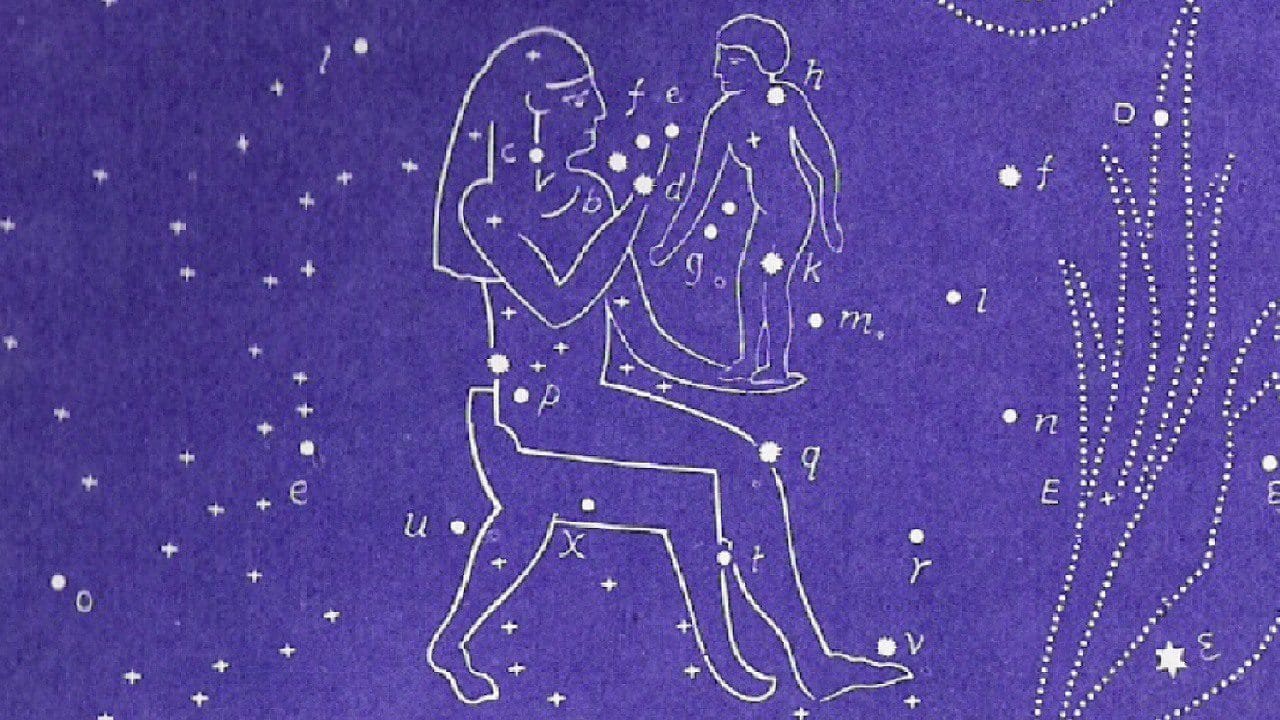
As this Coma decan of Figure 2 above comes from the ancient Dendera Zodiac, we should also recall that Axis E of this renowned zodiac represents a prophecy of the appearance of Coma’s Child, whose Axis E intersects the fish of Pisces as it extends across the circular zodiac. This tells us that the 7 BC triple union of Jupiter-Saturn marked the opening of the new precessional age of Pisces, as it closed out the previous Age of Aries the Ram. [See our Dendera Zodiac Poster in the right margin of this blog page]
Figure 3. Axis E on the Dendera Zodiac. #11
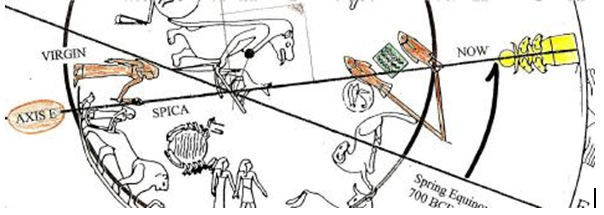
Following the triple Conjunction of Jupiter and Saturn in 7 BC was a unique triangular massing of planets. The great German astronomer Johannes Kepler referred to the Feb. 25th, 6BC triangular massing of planets; Jupiter, Saturn and Mars, as the “decisive Conjunction of 6 BC that opened our precessional age of Pisces.” As we have noted, Kepler also advanced the idea that the Magi were guided to Judea by the appearance of this series of Conjunctions.
E.W. Bullinger uncovers below, the popular belief regarding this general sign of the [Celestial Prelude] that was prevalent in and before the first century BC: “a traditional prophecy well known in the East, carefully preserved and handed down, that a new star would appear in this sign [Coma] when he whom it foretold, would be born.” 2 This tradition was at least partially based on Balaam’s declaration in Numbers 24, meaning that Balaam’s prophecy holds, for our purposes, minimally a twofold import.
Numbers 24:17 I shall see him, but not now: I shall behold him, but not nigh: there shall come a Star out of Jacob, and a Sceptre shall rise out of Israel, and shall smite the corners of Moab, and destroy all the children of Sheth.
First, Balaam’s revelation refers to the advent of Christ the King, the ascendant bright and Morning Star, who came forth out of Jacob’s genealogical line. This genealogy was marked astronomically by the similarity in the Jupiter-Saturn triple conjunctions surrounding both the births of Abram, Moses and Christ. Secondly, there is a celestial double meaning in the phrase: Star out of Jacob, with bearings on both the general and Specific aspects of our Celestial Prelude. The new star, or supernova in the head of the infant in Coma, visible to the naked eye for over 275 years, was the general sign, the Star out of Jacob, that prepared the Magi to watch for the aspects of the specific signs of the Celestial Prelude, which included the Jupiter-Saturn triple unions of 7 BC in Pisces. We find this second aspect of Balaam’s prophecy relating to the scepter as symbolic of the reign of the king planet; Jupiter. As we progress in our study it will become plain that Jupiter the king planet was the star that the Magi referred to as “his Star” in Matt. 2:2. The Magi had noted the triple Conjunction of signs in 7 BC, involving Jupiter and Saturn, that gave them a blueprint for the Jupiter-Regulus triple union marking the birth of Christ, starting in 3 BC. An early sign in August of 3 BC motivated them to begin their caravan to Jerusalem.
C2 Incipit-Title of Sa-gig Tablet II (LBAT 1601 obv. 12 H)
The line begins with a citation of the incipit-title of Sa-gig tablet II. What appear to be dates (Month 10 Day 7 ~Month 1 Day 1) actually indicate the incipit-title of the Calendar Text series 10. 7. 11, which identifies the initial position of a virtual moon at Capricorn (sign 10) 7° on Month 1 Day 1 of an ideal calendar. The use of Babylonian month names like (iti) (lit. “Ṭebētu,” 10th month) for zodiacal signs of the same number (i.e., Capricorn, the 10th sign) was not unusual in Calendar Texts, where an ideal year of 360 days was mapped exactly onto the sun’s ecliptic of 360°, so that each month begins with the sun’s movement into a new zodiacal sign, and the 30 days of a month correspond to the 30° of a zodiacal sign.” #12 Here we find an example of how the 12 signs of the zodiac matched their alignment in the astrology of the 12 months of their Babylonian calendar, with the 360-day year matched the 360° zodiac, depicting the Babylonian “base 60” hallmark of their number system, still in use in modern times. I submit that a combination of these celestial signs pointed out in the Cuneiform Tablet [LBAT 1601] with the chart on the Characteristics of Celestial Prelude below, gave the Magi all they needed in astronomical information to lead them to Christ’s birth.
The Celestial Prelude and the Biblical Astronomy of the Birth of Christ
In the early 2000’s when I first posted my studies on the Celestial Prelude of the Birth of Christ on [www.try-god.com], my proposal that the General Sign of the Celestial Prelude was the Coma Supernova that marked the general timeframe when the Magi should be aware and cognizant of the period leading up to the birth of Christ. The period was highlighted by the explosion and continued naked-eye visibility of the Coma Supernova, that was first reported in historical records around 134-128 BC. This was the inception of the time when the Magi would be looking for a triple planetary union with Jupiter in Leo. The precursor to this was the specific signs of the Celestial Prelude in the 7 BC triple union of Jupiter-Saturn in Pisces, the primary key that set the precedent for the actual Triple conjunction of Jupiter–Regulus in Leo, [see the Traits of the Celestial Prelude below.]
In previous blogs on the Coma Supernova marking the Birth of Christ as the General Sign of The Celestial Prelude, it was visible to the naked eye for a period perhaps of 275 years, as we documented in the blogs of the Celestial Prelude. The Second part of these heavenly signs that allowed the Magi to recognize the celestial markers of the birth of Jesus Christ as the Specific Signs of the Celestial Prelude, revolve around the triple conjunction of Jupiter-Saturn in 7 BC, that gave the Magi the stellar keys to breaking the code that sent them on their 800-mile journey to Jerusalem and Bethlehem to pay homage to the young king of kings. The separation of the General and Specific signs of the Celestial Prelude helped to untangle much of the confusion that has plagued this topic of study for millennia. Our realization that the Jupiter-Saturn triple conjunction of 7 BC, was the primary precursor that set the pattern and stage for the actual signs of Christ’s birth, removed added confusion from this topical study. With this fresh perspective of this triple union of Jupiter-Saturn, we can point out the precise details and aspects of the celestial signs marking the birth of Christ. This is a major departure from previous astronomical proposals for the “Star of Bethlehem,” including birth timing that align with the Hebrew Holy days of their calendar. With our updated view of the triple planetary unions of Jupiter and Saturn in Pisces, in 7 BC, in the proper historical context of this series of planetary unions that has been taken for Jesus’ actual time of birth by some, and also accepted as just too early to mark his birth by others, adjusts the vague and fuzzy details into clear focus. The debate between these two major camps that continues today, can finally be solved. This study will show, that the details of this celestial pageantry can even mark the very moments of the birth of the infant Jesus, with our recognition of the impact of these signs on the Magi in their search of Scripture for the revelation of the promised seed, in Rev. 12. How did the Magi know what to look for in this search? The entrance of the Babylonian Cuneiform Tablets referenced above, adds another element that fits the historical narrative of how the Prophet Daniel would have provided the best advice and clues for the Magi in their intrepid search for the only Begotten Son of God, that was so richly rewarded. The star trail that the heavenly Father left for Daniel and the Magi, leaving no stone unturned, allowed these notable priests to separate the stardust from the golden gifts that they delivered to Joseph, Mary & Jesus. The signs God left for them- a series of celestial clues for those with eyes to see and ears to hear, made provision so they wouldn’t miss this momentous occasion. This is precisely the proposal of this study that herein lies the true significance of these rare unions of Jupiter and Saturn in Pisces in 7BC. Based on the details of this specific set of preliminary signs, the Magi were alerted to a series of planetary unions and heavenly signs announcing the actual birth of Christ.
The Specific Signs of the Celestial Prelude of 7 BC to 5 BC
| Dates BC |
Conjunction of Planets |
Constellation |
| May 27th, 7 |
Jupiter-Saturn |
Pisces |
| Sept. 15th, 7 |
Jupiter, Saturn; [ring cycle], Sun & Earth aligned. |
Pisces |
| Oct. 5th, 7 |
Jupiter-Saturn |
Pisces |
| Dec. 1st , 7 |
Jupiter-Saturn |
Pisces |
| Feb. 25th 6 |
Triangular massing of Jupiter, Saturn & Mars |
Pisces |
| Mar. 5th , 6 |
Jupiter-Mars |
Pisces |
| April 15-20, 6 |
Lunar occultations |
Series |
| Mar. 23rd, 5 |
Total Lunar Eclipse |
Virgo |
| Sept. 15th, 5 |
Total Lunar Eclipse |
Pisces |
This series of planetary Conjunctions involving Jupiter certainly drew the focus of the Magi to the king planet, which they recognized as “his star.” They would have noted Jupiter’s triple planetary union with Saturn, and they knew that this union was caused by Jupiter’s retrograde motion. The Magi would have noted these triple unions involving Jupiter in both 7-5 and 3-2 BC. Therefore, the Magi would have been watchful not only of Jupiter’s motion, but vigilant also for a triple union associated with its motion. Perhaps we can begin to see the wisdom of the Heavenly Father’s choice of stellar signs, which make up this celestial epistle of introduction, for the Magi to mark the signs surrounding Jesus’ birth. These clues alone would have provided the Magi much on their way to finding the Messiah, but God had a lot more in store, as the Jupiter-Saturn triple unions chased, the 6 BC massing of planets with Mars, after which followed a key Conjunction including Mars. Finally, on the heels of this Conjunction involving Mars, in the next month came a remarkable series of lunar occultations, followed by two total lunar eclipses in 5 BC. These preliminary signs not only provided the Magi with the blueprints they would need to recognize the celestial signs identifying the time frame of the birth of Christ in 3-2 BC, but they even set the pattern of Total Blood Moon Lunar eclipses, marking the victorious return of Christ. The fact that the signs of this dress rehearsal unfolded over a period in excess of two years was also a clue of what to expect, when the curtain actually arose on the celestial pageantry of the birth of Christ. The period of exactly 2 years from Sept, 15th of 7 BC to Sept. 15th of 5 BC as seen in the chart above, set the stage for two Jupiter-Venus Conjunctions bracketing the heavenly signs marking the actual birth of Christ between Aug. 31st, 3BC and Aug. 21st of 1 BC, we can see how the Magi would recognize these specific markers leading them to the promised seed-Jesus Christ. Also, the fact that these signs almost all occur in Pisces, is interesting due in part to an ancient eastern tradition, that the influence of the sign of Pisces, the fishes presided over the land surrounding and including Israel. Others believed that Pisces symbolized the House of Jacob, and with the obvious presence of the King planet Jupiter, would spell out why the Magi came to Jerusalem looking for the King of Israel. This relationship of Jupiter-Saturn heavenly signs linked to Israel stretched back in history even to include the births of Abraham and Moses. In the following reference to Jupiter-Saturn unions related to the birth of Moses, R.H. Allen has probably isolated the quote from Abrabanel referenced by Kepler;
“The Rabbis held a tradition, recorded by Abrabanel in the 15th Century, that a similar Conjunction took place three years previous to the birth of Moses, and they anticipated another at their Messiah’s advent.”13
Figure 4. May 27th, 7 BC Jupiter and Saturn in Conjunction in Pisces, with the Sun and Mercury in Gemini, Venus in Cancer, Mars in Virgo and Moon in Pisces. 14
In this first preliminary sign we find Jupiter the scepter and King planet in Conjunction with Saturn, symbolic of Satan, in Pisces near dawn in the eastern sky, as a result of Jupiter’s proper motion.

The first thing to notice about the Specific Signs of the Celestial Prelude from 7-5 BC, is that this first Conjunction of Jupiter and Saturn shows the authority of the scepter of God’s kingdom resident with Saturn-Lucifer in his first estate as the Angel of light. He was set apart and alone in his authority from the celestial signs that follow, outside of the clearly marked two-year period from Sept. 15th 7BC to September 15th 5BC, containing the rest of these specific preliminary signs.
Its purpose is to mark the first estate of Lucifer as the original bright and Morning Star, second only to God the Creator, in the 1st heaven and earth–head over all the angels as the angel of light, prior to the Creation of Man in the Garden of Eden. Let’s take some time to digress here and set the background of Lucifer’s history according to the accuracy of God’s Word written in the stars, and in Scripture. This first sign refers to Lucifer in his original estate as the “star of the morning” as Isaiah 14 tells us:
Isaiah 14:12
How art thou fallen from heaven, O Lucifer, son of the morning! How art thou cut down to the ground, which didst weaken the nations!
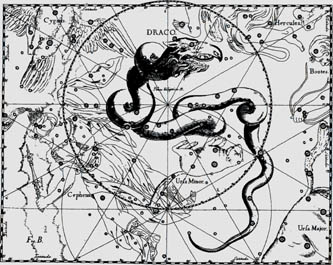
The demise of Lucifer is indicated in the astronomical mechanism known as the precession of the poles, with the star Thuban: alpha draconis, the brightest star in Draco the dragon, as the original pole star. The precession of the poles indicates Lucifer’s demise, because the pole star has moved from Draco and now resides near Polaris, or Al Ruccaba of the “little flock” in Ursa Minor. The pole star between the feet of the crowned king Cepheus, depicts Jesus Christ in at least two ways. First, as the prominent king, and new Chief Cornerstone, since Cepheus is the crowned king, even as Regulus the king star, is between the feet of Leo, the Lion king of Judah; [Gen.49:8-10]. Cepheus also means “the branch” and is depicted as a king holding a branch/sceptre at the north pole, [Jer. 23:5, 33:15]. Secondly, and with spiritual foreshadowing, he is the head of his spiritual body, the Church. God put all things under Christ’s feet, indicating his seven-fold lordship over all Creation; [Eph. 1:20-23]. The exception to this, of course is God Himself, Who Christ ultimately subjects himself to [I Cor. 15:27-28], avoiding the pitfall of Lucifer’s egomaniacal demise. The Decan of Cepheus depicts the Royal king and redeemer coming quickly to rule, enthroned in the highest, at the northern polar reaches of the heavens. With his scepter in hand and the Northern Pole Star symbolizing all things in Creation under his feet, as seen in the capstone of the Great Pyramid, we have powerful imagery of the Authority and Dominion of the King of Kings. As the principles of Biblical Astronomy tell us, the star names relating the Biblical narrative of each constellation they appear in, relate the info. Their description of the promised seed in each constellation and decan of the Mazzaroth, as it aligns with how those star names are used in Scripture–sets the standard. There are 19 main stars in Cepheus, 3 of which we focus on here.
Zech. 6:12-13 “Thus speaks the Lord of Hosts, saying behold the man whose name is the Branch; and he shall grow up out of his place, and he shall build the Temple of the Lord.” v. 13 “Even he shall build the Temple of the Lord; and he shall bear the glory, and shall sit and rule upon his throne; and he shall be a priest upon his throne; and the counsel of peace shall be between them both.”
Here we see the promised seed of the woman clothed in the celestial royalty of absolute dominion over all Creation, corresponds to the “Branch;” the holy scion of God in light of the branch prophecies in God’s Word. As the only Crowned star picture in the heavens, the name “Cepheus” in the Dendera Zodiac, is known in ancient Egypt as Pe-Ku-hor; meaning “one coming to rule-” a consistent theme of the star names below. The 3 primary stars of Cepheus are as follows;
1. Al Deramin-he who comes quickly from the right Arm or Hand of the Father-The Hand of Blessing.
2. Al Phirk-signifying the Redeemer of the stars of his flocks [Ursa Minor and Major].
3. Al Rai-The Shepherd who bruises or breaks. [Ps. 23; and the 7 Redemptive Names of God embodied in the Shepherd.]
Figure 5a. Cepheus Decan. 15
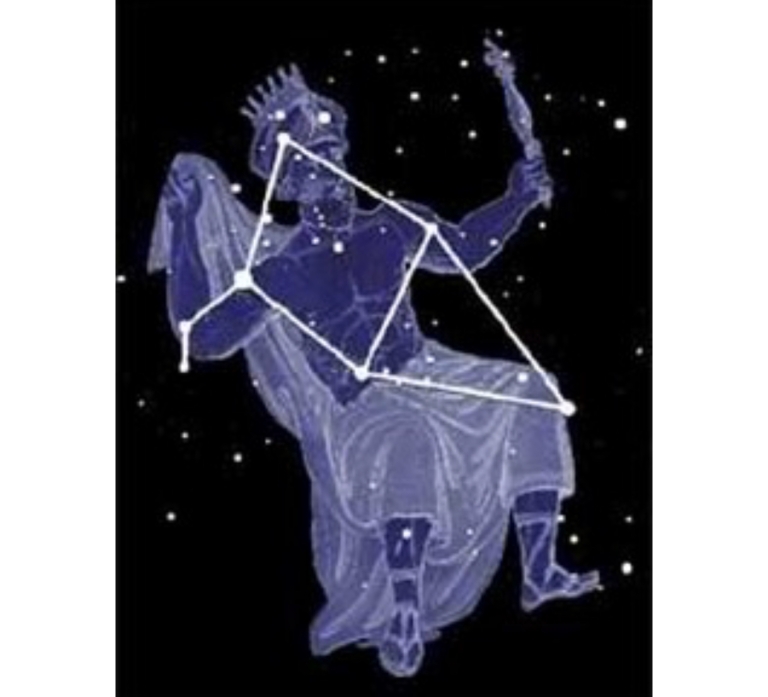
Thus, we have the Redeeming Shepherd coming quickly from the right hand of God who bruises or breaks, to redeem his flocks. An interesting note regarding these 3 primary stars at the North Celestial Pole, as the Pole star recedes according to the Precession of the Poles, each of these 3 brightest stars in Cepheus will inherit the title and function of Pole star, currently occupied by Polaris-[Al Ruccaba] of Usra Minor. Starting around 4000 AD in 1500-year intervals, these primary stars of Cepheus will occupy the coveted Northern “Pole Position;”
1st Al Deramin
2nd Al Phirk
3rd Al Rai
Cepheus as the third and final decan of the sign, “Pisces,” He is the crowned and bearded King arrayed in his royal robes, seated as if on a throne where he holds a scepter raised in his left hand stretched out to Cassiopeia. Cassiopeia is a decan constellation belonging to the next primary constellation group of “Aries, the Ram.” Jon Nessle taught us the record in his recent 8/15/23 session 1b of Chapter 5 in the OT History class, on how the King of Persia-Darius I extended his golden scepter to his Queen Esther, [Esth. 5:1-3] when she entered the royal court uninvited, resulting in saving the Jews in his kingdom, from Haman’s evil plan of genocide against Israel. With a futuristic view, Cassiopeia also can represent the bride of Christ, delivered by him. Even as king Darius I saved all Israel with his extended scepter, so Christ has saved all his church. Cepheus has his foot literally planted atop the Northern Pole Star; “Al Ruccaba” as pictured in a time-lapse photo below, depicting how all the stars revolve around the King of Kings. [I Cor. 15:24-28].

These signs and constellations at the North Pole or circumpolar stars are reflective of the “Royal Family” since they never set. The ancients called them the imperishables. With the right foot of the King standing over the penned and guarded sheep of Ursa Minor, we can see Jesus the Shepherd protecting his flock of the “little dipper” from his enemies, that will be trodden underfoot.
Figure 5b. Cepheus Decan. 16

Even in this veiled mythology we can see the light of the narrative of the returning Shepherd-redeemer shining through to deliver his flocks. Bullinger refers to this precession of the North pole and Al Ruccaba specifically as follows:
“Although the star does not revolve like the others, the central point in the heavens is very slowly but steadily moving. When these constellations were formed the Dragon possessed this important point, and the star alpha, in Draco, marked this central point. But by its gradual recession, that point is sufficiently near this star Ruccaba, in the Lesser Sheepfold, (Ursa Minor) for it to be what is called “the Polar Star.” But how could it have been known five or six thousand years ago? How could it have been known when it received its name, which means the turned or ridden on? That it was known is clear: so likewise was it made known in the written Word that the original blessing included not merely the multiplication of the seed of the faithful Abraham, but it was then added, “And thy seed shall possess the gate of thy enemies,” [Gen. 22:17]. 17
This is an obvious indicator of the accuracy of these God-inspired star names [Ps. 147:4], dating back to antiquity, showing divine insight inherent in the heavens from earliest times. This establishes a previous point that the purpose of God’s Revelatory Astronomy stands in juxtaposition to the evolutionary theories governing modern scientific Astronomy or the idolatry of astrology. Bullinger’s reference also shows the witness of the stars in concert with that of the Scriptures, and how the individual words in Scripture link to star names as a consistent testimony throughout this study, and a primary theme of our blog and web-site.
This stellar transition of the pole star reflects an aspect of the transference of power from the fallen Morning star, who presided over ten categories of precious stones, representing angels [Ezek. 28:14], to the Risen Morning Star [Rev. 22:16], presiding over 12 categories of precious stones, representing the 12 tribes of Israel, the 12 signs of the zodiac, and later the 12 apostles at the foundations of the Age of Grace and the 12 foundations of New Jerusalem, [Rev. 21:10-21]. The following is a Summary of the Traits of the Celestial Prelude:
The summary below shows the specifics of the signs that led the Magi to the birth of Christ.
Characteristics of the Specific Signs of the Celestial Prelude
- Jupiter was clearly marked as “his star.”
- Jupiter was involved in a triple planetary Conjunction.
- Jupiter was involved in a series of planetary conjunctions.
- Jupiter’s retrograde motion would play a key role.
- Jupiter’s triple union was followed by a massing of planets.
- This massing of planets was followed by a Mars Conjunction.
- The Jupiter-Mars Conjunction was followed by a series of lunar occultations, and 5BC total lunar eclipses.
- This series of conjunctions would last about two years.
- The annual twenty days when the Sun is in Virgo would be a key.
- The September 15th alignment of Jupiter, Saturn the Earth and Sun in 7 BC that occurred in the evening at sunset, directed the Magi’s attention to the end of the 20-day period when Virgo was “clothed with the Sun.”
- The second lunar eclipse on September 15th of 5 BC established that the Magi should be watchful of lunar activity during this time. This framed the 42 minute period between Sunset and Moonset on the only day of the year when Virgo “was clothed with the Sun and the moon under her feet.” [Rev. 12:1-5]
- The September 15th Heliacal Rising of Jupiter and Saturn foreshadowed the Heliacal Setting of Spica, located between the setting Sun and Moon in Virgo, identifying a 30-minute period when the birth of Christ happened.
This important interlude and temporary detour into the symbolism of the first Jupiter-Saturn conjunction is required to fully grasp the significance of the spiritual war we are currently engaged in, whether we realize it or not. God has fully equipped us for victory with our panoply of spiritual weapons and armor, in Christ but we must dress and train ourselves in our renewed mind implements, if we are to be victorious, [Eph. 6:10-17]. Now we are ready to resume to our dialogue on the Babylonian Cuneiform Tablets as part of the “Esoteric Babylonian Commentary” (abbr. EBC) that represents an excerpt from a larger commentary tablet LBAT 1601, that is unusually wide in scope encompassing … medical diagnosis, cuneiform sign exercises, and magical incantations and rituals, which reinterpreted these diverse fields of knowledge in terms of astronomical phenomena. The topics selectively excerpted into EBC by a lamentation priest suggest a compartmentalization of textual expertise, consistent with professional purviews in the late 1st millennium BC. #18
Next we will look at an Appendix of the EBC below;
- Qα Appendix to §Q (EBC rev. 4–5)
As was the case with §B2α, the appendix here belongs only to EBC, but not to LBAT 1601. The term ṣâtu probably has the same sense that it had in §Q, referring primarily to the lexical tradition. The commentator’s aim was to ratify the conclusions reached in §Q and to relate the tripartite world of “mound, sea, and wind” to the great gods Anu, Ea, and Enlil. Anu’s identity as the “primeval” world mountain rising out of watery origins certainly befitted his status as head of the Mesopotamian pantheon in late period Uruk. Some corroboration, is provided by tablet IX of the incantation series Sag-gig-ga-meš (“Headaches”): “The goddess Ištar, prior to whom (nam-an-na =ullânušša) none exists in tranquility (and) delight, allowed it (i.e., the headache) to come down from the mountain” (CT 17,22: 155–158). The expression nam-an stems from the idea that an (i.e., the god Anu) designated the “primeval” (ullânu). We are on much firmer ground with the other two major gods of the pantheon. “Ea refers to water” simply alludes to the subterranean waters of the Apsû as Ea’s domain. The epithet im-ḫur-saĝ for the god Enlil appears in the composition Enlil in the Ekur (Enlil A: 97), as well as in a bilingual passage where the epithet is left untranslated in Akkadian: “The great mountain, Enlil- im-ḫur-saĝ, whose peaks rival the heavens, whose foundations are laid in the pure Apsû” (4R 2 27 no. 2: 15–18). To be sure, interruptive glosses such as im tu-ḫur-saĝ (“im-ḫur-saĝ – with the sign read as the logogram 15 ‘wind’”) are less common in commentaries, though there is a striking parallel in another commentary on the Babylonian Creation Myth: tu šá-a-ri, “the sign – read as the logogram 15 – (means) wind.” In view of the avowed plan for these commentaries, i.e., to bring diverse fields of knowledge under the umbrella of pan-astronomical hermeneutics, the singling out of Anu, Ea, and Enlil here most likely served astronomical purposes as well. Just as the entire cosmos was encapsulated in the basic sound patterns of cuneiform (§Q), components of this cosmos typified by the three great Mesopotamian gods were likewise inherent in the sky, since all celestial bodies traveled along three heavenly paths: the Path of Anu centered on the ecliptic, the Path of Ea to the south, and the Path of Enlil encompassing the circumpolar stars to the north. #19
We may prefer, instead, the following syntax: *im-ḫur-saĝ :im:šá-a-ru: šá-du-ú, “im-ḫur-saĝ, (with) the sign im meaning wind (and) the logogram meaning mountain.” Lambert (2013, 140: 20). The erroneous understanding d:d: ul-la-nu: d 40: mu-ú /-ṭú : d: šá-a-ri,“Girra = Anu = fire; from of old. Ea = water. Earth = the Nether-World mountain. Enlil = air” by Scurlock/Al-Rawi (2006, 371f.) has led to the astounding conclusion that these were “Mesopotamian equivalents for the four elements as conceived by Hellenistic philosophers.” #20
In the light, of “the entire cosmos was encapsulated in the basic sound patterns of cuneiform“ spoken words of the Creator in Gen. 1:1-2…some revealing parallels have been drawn between the Creation Epic of the Babylonian Cosmos and the Biblical Cosmos in Gen. 1, by Iurii Mosenkis, included below. This insight may help to see how these Biblical concepts were corrupted in Babylonian astrology.
Gen. 1:1-2
‘In the beginning God created the heavens and the earth. Now the earth was without shape (tōhū) and empty (bōhū), and darkness was over the surface of the watery deep (tehōm), but the Spirit (rūah.) a [1] of God was moving (the root rh.f ‘to soar’ related to rh.m ‘to hatch’) over the surface of the water’ (Gen. 1:1–2). Let us interpret the key concepts of the passage.
Tōhū is akin to names of sea and sea monster b [2]. Not only Tōhū but also the cognate Akkadian Tiamat ‘primeval water monster’ and Leviathan ‘water monster’ (mentioned in, Job 41) might be compared to the Egyptian constellation of the Crocodile (modern Draco). c [3]
Bōhū as a cognate of Hebrew behēmōt ‘earth monster,’ might be compared to the Egyptian constellation of Hippopotamus (Ursa Minor). d [4] The Spirit of God (rūah, a cognate of the Arabic legendary bird Ruhh name) can be related to the image of the Cygnus constellation (‘swan’ or simply ‘bird’ in ancient Greek astronomy). e [5]
Thus, three primordial beings in the Creation story (Tōhū, Bōhū, and Ruah) might be linked to the circumpolar (unsetting, ‘immortal’) constellations of Draco, Ursa Minor, and Cygnus. Aforementioned Behemoth, Leviathan, and the monstrous bird Ziz of medieval legends might be other images of the same constellations.
On the other hand, three primordial beings of Chaos may symbolize three Babylonian zones of the heaven: tōhū may be referred to the zone of Enki-Ea the water god (the southern constellations), Bōhū may be linked to the zone of Anu the sky god (the constellations near the ecliptic), ruah refers to the zone of Enlil the air god (the imperishable northern constellations).
Behemoth’s sword (Job 40:19) and ‘the flame of a whirling sword’ which guarded the Paradise (Gen. 3:24) may be regarded as sword-shaped Cygnus or more likely as Boötes which also resembles the sword. The fall of the primordial serpent in the book of Revelation 12, may be related to such astronomical events as the exit of the North Celestial Pole from the constellation of Draco (after 2000 BC) and the moving of the constellation toward the horizon. [fall]
The throne of God (merkābāh) is a cognate of the star name of chariot (markab), in Pegasus’ decan, whereas the unsetting circumpolar constellation of Ursa Major is regarded as a chariot in ancient astronomy, f [6].
Ursa Major might also appear in the image of menorah (the first description: Exodus 25:31-40) as ‘a lamp to burn continually’ (Ex. 27:20; Lev. 24:2-4). Hanuka (as the rite of altar renovation) and the burning of Hanukal Menorah may symbolize the winter location of Ursa Major in direct opposition to the rising constellation Ara (literally ‘altar’). [Rev. 1:20] g [7]
[1] Hebrew rūah. ‘breath, soul, wind’, Ugaritic rh, rh. ‘id’ (О Балу, с. 413), cf. Sumerian EN.LIL ‘lord of wind’.
[2] Hebrew tehōm. ‘abyss’ or ‘ocean’ (Abb. 3:10; Ps. 42:8; night see: О Балу: Угаритские поэтические сказания, с. 358), Akkadian tâmtu ‘sea’ and Tiamat ‘sea monster as an embodiment of primordial chaos’ (slain by Marduk who was symbolized by Jupiter).
[3] The name of Leviathan is a cognate of Ugaritic Lotan or Lawtan (who fights Baal Hadad) and Greek (borrowed from Semitic) Ladon (Draco, according to Hyginus’ Astronomy); cf. also Biblical monsters Tannin (Gen. 1:21; Ps. 74:13, comments: О Балу, с. 157; the same word in Ex. 7:9 means ‘snake’, in Ez. 29:3 ‘crocodile’, in Is. 27:1 ‘sea creature’; Hebrew tannin means ‘snake’, ‘sea snake’, ‘sea beast’: О Балу, с. 363) and Rahab (Is. 51:9; Ps. 89:10), Ugaritic snake Tunnunu fighting Balu (О Балу, с. 19-20, 181–182). The division of the dragon in Babylonian cosmogonical myth means the creation of zodiac (this creation by Marduk after his victory over Tiamat is clearly described in the Babylonian epic). Draco is the primeval snake named Ophion in Orphism. However, some of these images might be influenced by the concept of Hydra constellation.
[4] Bōhū is traditionally compared to βάαυ as a primordial creature of Phoenician cosmogony (Philo of Alexandria). Crocodile (Draco) is depicted on the back of the Egyptian hippopotamus-goddess Taurt (Ursa Minor). Cf. bhmtw as the designation of еру beast-shaped constellation in Qumranб Text I. 4Q 186.1: Тексты Кумрана, СПб., 1996, вып. 2, с. 264.
[5] Arabic Roc like Indian Garuda (which captures elephants and rhinoceroses) may also be Cygnus near Ursa Minor (behemoth in Egyptian mythology). The word rūah means ‘air’ and ‘wind’ in the Bible (Dobin, J., p. 215), and this word might be compared with Sumerian; En-lil, ‘god of wind’, as the lord of the northern sky; cf. also Eg. Shu, the god of air, and the first bird on the first hill (perhaps, the North Pole) in Egyptian cosmogony. [Bennu bird]
[6] Cf. also Cassiopeia constellation, associated with a throne in ancient Greek astronomy.
[7] Ursa Major is known also as the Minoan Double Axe in ancient Crete. #21
The last element we want to add for your consideration of the idea that the Cuneiform Tablets, were referred to as “heavenly writing.” and their possible link to the Gospel in the Stars. Evidence has surfaced that indicates that there are two celestial forms of history authentication related to Scripture. From Greece came the belief in katasterismos, i.e., that the constellations depicted tableaux of miraculous earthly events that had been transferred onto the stars. And from Mesopotamia came the belief that the constellations depicted divine, cuneiform “writing” that imparted inviolable truth through wordplay encrypted in each star-god’s name or epithet. Originating from Mesopotamia was the astrological belief that the constellations depicted “heavenly writing” that divulged unassailable truth through the medium of wordplay encrypted in the star-gods’ titles. Cuneiform literature confirms that Mesopotamian’s construed pun-based wisdom as a form of divine revelation, and recorded such findings in their religious mythologies as if they were historical facts. #22
The Hellenic tenet called katasterismos, or “placing among the stars,” proclaimed the forty-eight ancient constellations as a sacred record of historic events that had occurred on earth—each star-figure engaging in one or more of the preternatural feats that made it, like Jesus, immortal (Cancik, Schneider, 2005: 7, 33-34; Condos, 1997: passim). Moreover, Greek celestial mythology written seven centuries before Jesus’s birth attests that Orion had the ability to walk upon the sea. It will be shown that this supernatural power, which was reported as historical fact, appears to have been derived from astronomical observation. When Orion is plotted on a star-map his outstretched legs depict him striding away from celestial land and onto the astral “Sea” delineated by the eight, contiguous aquatic constellations consisting of the Dolphin, Goatfish, Southern Fish, Water-pourer, Sea Serpent, River, Twin-Fishes, and Ship; an act accentuated by the fact that his front foot, demarcated by the star Rigel (P Orionis), is also the first star (X Eridani) in the River constellation, Eridanus. #23
Figure 6a. The Star Rigel in Orion’s foot as the first star of the celestial river Eridanus. Fig. 6ab Eridanus Super-void. #24
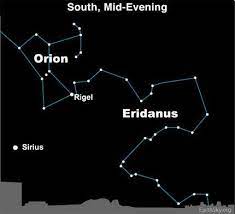

When Matthew, Mark, and John inspected the place where Jesus had ascended, ouranos, “heaven, firmament,” they saw Orion in the act of walking upon the celestial “Sea” depicted by the eight, adjacent watery constellations; with wordplay in one of the cuneiform titles for Orion imparting the phrase “Walking upon the Sea.” Other puns in Orion’s cuneiform title yielded “Son of God” and “Anointed-One” – terms that accorded precisely with the evangelists’ conception of Jesus. We argue that these correlations compelled the Gospel authors to equate Orion with Jesus and ascribe the constellation’s astronomically based “sea walking” ability to him as well. Moreover, it will be shown that the setting of Jesus’s Sea-Walk miracle corresponds with the celestial landscape surrounding Orion; and that wordplays in Orion’s stellar Sea-Walking tableau correlate with the common themes found in the Gospels’ Sea-Walk narratives. #25
Seven-hundred years before the birth of Jesus the Greek astronomer-poet Hesiod wrote:
“Orion … the son of Euryale, the daughter of Minos, and of Poseidon, and that there was given him as a gift the power of walking upon the waves as though upon land” (Hesiod, 1977, pp. 70-71). Interestingly, this claim appears in the Astronomia, “Astronomy,” a text whose subject matter was astronomical in nature. The Greek mythographer Apollodorus reiterated this claim around 50 BC, “Poseidon bestowed on him [Orion] the power of striding across the sea.” #26
And decades before Jesus‘ Sea-Walk miracle took place, the Roman astronomer-poet Gaius Julius Hyginus (64 BC-17 AD) wrote, “Orion … He had the ability of running over the waves as if on land. . .” (Grant, 1960, p. 221). How did Hesiod and later Greco-Roman astronomical writers conclude that Orion could walk upon the sea? The answer is intimated by Hesiod in the Astronomia. Shortly after proclaiming Orion’s miraculous sea-walking ability, the Earth-goddess sent up a giant Scorpion to pursue Orion and sting him dead. Zeus placed both Orion and Scorpius in the sky as a testimony to this monumental chase scene: as Scorpius rises in the east, Orion sets in the west; a celestial picture simulating the primordial chase undertaken by these two constellations. The simultaneous rising of Scorpius and setting Orion seen in Fig. 8 below, inspired the supernatural story of his death, reported as historical fact in Hesiod’s ‘Astronomia.’ Pertinent here is Hesiod accepted the supernatural, stellar “chase“ scene portrayed in Scorpius-Orion as an event that had once taken place on earth because it was depicted in the heavenly realm of the constellations; the still-frame of Scorpius “chasing“ Orion, serving as the proof upon which this miracle was based. #27
Figure 6b. Ophiuchus viewed between and above Scorpio and Sagittarius. [public domain]
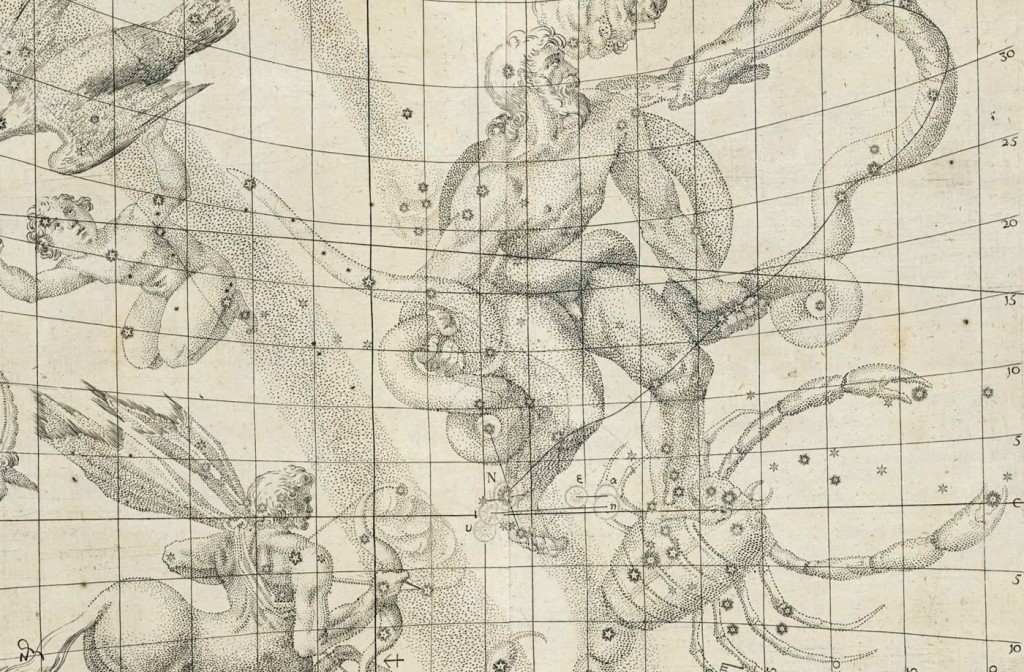
This section of the sky between Sagittarius and Scorpius, is also where Kepler’s Nova exploded onto the scene at Ophiuchus’ heel, at this truly critical juncture or crossroads in the heavens. This is where the ecliptic, that houses the 12 signs of the Mazzaroth, [Ps. 19:4-6] crosses the Galactic equator! It is highly fascinating that Kepler’s Nova exploded so close to the star Saiph; meaning the wounded one, as if to specifically mark it. The Planisphere axis intersects the star Saiph, in the LXX Greek meaning “bruised,” located in Ophiuchus‘ heel, the same Greek word found in Gen. 3:15 for “bruised,” while Ophiuchus‘ other other leg is poised over the head of the Scorpion, striking his fatal blow, crushing the enemy-scorpion. Kepler’s Supernova marked the celestial inception point of this Planisphere Axis of the Heavens, in kindred harmony with the Jupiter-Saturn cycle of conjunctions, which over 1600 years previous, had qued the Magi to begin their trek to Jerusalem for the birth of Christ.
With what we have already documented in previous blogs concerning the Gen. 3:15 Planisphere Axis, this Planisphere Axis inter- sects a series of Stars, constellations and decans, telling a very specific story-of the prophecy of Gen. 3:15 which is still in the process of becoming history as Jesus has already fulfilled much of these star prophecies, sealing the dragon’s doom! The root and basis of all world mythology, not only spanning the Ecliptic and the Galactic Equator with the Celestial Gospel, also links the words of Scripture, to specific star names in reference to these prophecies of the Promised Seed Jesus Christ.
Figure 6c. The Ecliptic in relation to the Galactic Equator.

When we consider the location of Kepler’s Supernova in close proximity in the Star Saiph in Ophiuchus’ Heel, being stung by the Scorpion, we are witnessing the first of multiple heel alignments on the Planisphere Axis relating different aspects of the victory of the Promised Seed over the Serpent, as promised in Genesis 3:15. Figure 6c above, shows the Galactic Axis in harmony with the Axis of the Planisphere extending through Ophiuchus’ Heel between Sagittarius and Scorpius, rising in the east with Orion setting in the western Galactic Plane. Here Orion’s foot star-Rigel is the first star of the heavenly river Eridanus also intersecting the celestial equator, depicting the relationship at the center of the Milky Way Galaxy, unifying the message of The Star Gospel on the ecliptic and equator via the Galactic plane.
Figure 7. Ophiuchus, battling Serpens as the Scorpius stings his heel. #28
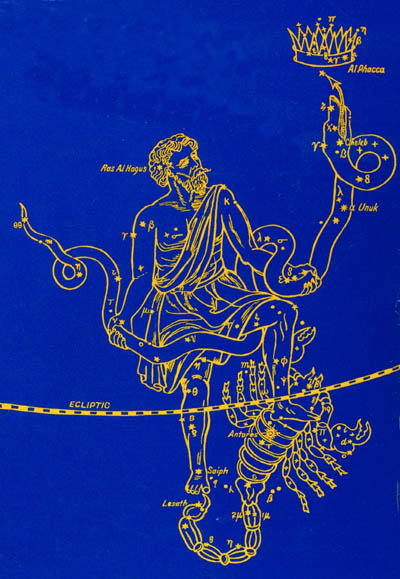
In the record of Scripture, with the celestial depiction of the first Messianic Prophecy of Gen. 3:15, we find this stellar chase scene portrayed between Scorpius-Orion at opposite ends of the heavens;
Gen. 3:15 And I will put enmity between thee and the woman, and between thy seed and her seed; it shall bruise thy head, and thou shalt bruise his heel.
Here we have a reference to the spiritual battle between light and darkness, embodied between the serpent and its seed, versus the Woman with her seed. God is telling the serpent that the seed of the woman, who is Jesus Christ would bruise the serpent’s head, indicative of the fatal blow that Christ inflicts on the enemy, as opposed to the scorpion stinging Christ’s heel, showing Christ’s sacrifice, as short-term sufferings that freed all mankind from the serpent’s curse. While the man Ophiuchus’ heel is stung by the Scorpion, he is wrestling the serpent–Serpens for Corona–the Crown of Dominion above, revealing how our spiritual adversary, shown as a serpent works through his seed–the scorpion, in conflict with the man, fitting the three Scriptural elements of the star picture; in Fig. 7, the Man vs. the Serpent and its Scorpion-seed. In Hebrew the Scorpion is Akrab, meaning war or conflict; against the Man, for dominion over Creation. The Church of the body of Christ is already walking in this victorious power, as the entire kingdom of the serpent and his seed is crushed under our feet, in Christ. We must recognize this unalterable victory as a past tense reality, we only need to stand on the truth of God’s Word to reap the full benefits of this eternal victory, both in this world, and the coming one.
This story from Gen. 3 is depicted in astonishingly powerful ways in the Gospel in the Stars, as the truths the stellar axis brings to light as it intersects stars across the heavens in Fig. 8 below.
Figure 8. Genesis 3:15 Planisphere Axis. #29
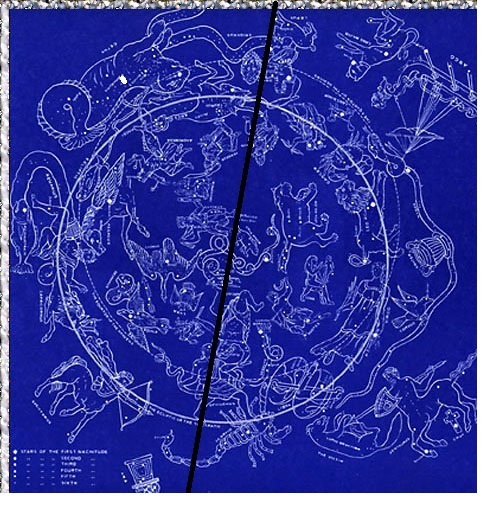
This “Genesis 3:15 Planisphere Axis” extends through the North pole intersecting a number of constellations and notable decans that relate aspects of the Genesis 3:15, theme from various teaching perspectives. Starting at the bottom of the planisphere, we find the Scorpion constellation–Scorpius, whose prominent tail stinger is located under the heel of Ophiuchus the Serpent-bearer sign, who is engaged in a struggle with the serpent-Serpens. The axis intersects the star in Ophiuchus‘ heel, called Saiph, in the LXX Greek meaning “bruised.” [30] This is the same Greek word found in Gen. 3:15 for “bruised,” while Ophiuchus’ other leg is poised over the head of the Scorpion, striking his fatal blow in crushing the head of the enemy. Kepler’s Nova marked the star Saiph to open the Galactic Axis where it crosses the ecliptic path of the 12 signs of the Mazzaroth, calling our focus to this axis, and its alignment of Heels across the heavens between two Stars named “Saiph,” at each end of the Genesis 3:15 Axis. We find further evidence in the lunar signs of the evening on Wed., April 28th, after Christ was crucified. During this evening the 1st Full Moon following the Spring Equinox, in 28 AD, the Moon passed over Ophiuchus’ foot-the Man who just laid down his life, by shedding his sinless blood to redeem all mankind, fulfilled this key part of the Messianic Prophecy of Gen. 3:15. This Paschal Moon seen from Jerusalem rose about 7:16 pm, and set about 6:15 am Jerusalem standard time, the eve of April 28th and morning of the 29th of April, 28 AD. [31]
I submit that the Mythology of Greece, Mesopotamia and many other ancient earthly nations, are all rooted as corrupted forms of what Joseph Campbell called the World Monomyth. In his works he embodies a framework for Comparative Mythology, wherein the Hero’s Journey is a template where he embarks on his journey, has transformative adventures, and returns home. #32 In the Genesis 3:15 Planisphere Axis as this axis extends through the next sign, we find it intersecting the decan of Scorpius called Hercules, whose foot is placed over the Head of Draco the serpent–dragon whose location over the North pole, has been removed from it and now resides under King Cepheus’ foot over the tail of Ursa Minor. The axis runs between the two heads of Hercules and Ophiuchus, who are aligned, but inverted to each other. The star in Hercules’ head is Ras Al Gethi, meaning the head of him who bruises, keeps with the Gen. 3:15 theme. 33 As this axis extends down to Hercules’ left foot, it shows the result of Ophiuchus‘ battle with the Serpent, since Hercules left foot crushed the Dragon’s head, destroying the devil’s works. As Hercules is kneeling, his right heel is lifted up as if wounded, in some star maps as Fig. 9 with a spear through his heel, [Rev. 12:9-10, Ps. 74:12-14]. Thus, we can see the source of the Greek Myth of the Labors of Hercules, not to mention Jason and his Argo-nauts pursuing the Golden Fleece; the ever-shining constellations as they tell of the greatest Hero of All-Jesus Christ!! Even as “Joshua” is the Hebrew equivalent of “Jesus,” so “Jason” is the Greek namesake of our Lord of Lord’s.
Figure 9. The Decan of Hercules

A.R. George writes: In ancient cuneiform scholarship the writing of a name can be adapted to impart information about the nature and function of its bearer. John 20:30-31 leaves an intriguing clue regarding the nature of Jesus’ miracles, referring to them as semeia, “signs,” the plural form of semeion. And although the Greek semeion indeed meant “sign, mark, omen”—it also had a more nuanced meaning: “a Godly sign, an omen, especially of the constellations regarded as signs” (Liddell & Scott, 1997, p. 727). #34 Once again most mythographers have it backwards since the constellations existed prior to mankind, and were untouched by the infected hand of man, being the handiwork of the Almighty.
Moreover, one of the astronomical epithets for Orion, SUKAL, “Vizier, Messenger,” also represented a revered type of priest whose title meant “Anointed-One,”—the cuneiform equivalent to the Greek-Christos. Their highest order of such priests assumed the designation, “Anointed-One-of-the-ApsU,” implying they held sway over the Apsu, i.e., the stellar Sea that Orion was walking upon in Greek celestial mythology. In an era when celestial punning was construed as religious revelation, it seems likely that Matthew, Mark, and John would have conceptualized this as an epiphany imparting that Orion was the avatar of Jesus, whose Sea-walk also included the disciples’ boat- correlating with Argo, the Ship constellation stationed just southeast of Orion–Jesus. How the Argo may have come to be seen as a Boat full of “disciples” is found encrypted as wordplay in its Mesopotamian title. The Argo appears to be the derivative of a Mesopotamian “Cargo Ship” or “Barge” written Makurru in Akkadian. Cuneiform astronomical texts confirm that this stellar Ship was found in the “path of Ea,”-which is the southern region of the night sky (Hunger & Pingree, 1989, pp. 35-39). Mythical texts also confirm its presence in the Apsu, or celestial “Sea” that Jesus–Orion is walking upon; (Kramer & Maier, 1989, pp. 42-43). #35
In summary, some key elements in this study include; the LBAT 1601 Cuneiform Tablet, and how it could have aided the Magi in their search for the Star of Bethlehem, and how this tablet meshes with the Traits of the Celestial Prelude, as a likely basis for Daniel to teach the Magi what to look for in their search. These Cuneiform Tablets could have also provided a historical medium to transmit the prophetic content of the Celestial Gospel from ancient times. As we continue efforts to uncover more documentation along these lines, we could see added evidence for the Gospel in the Stars. In recognition of this, I’m signing off in Cuneiform this month!!
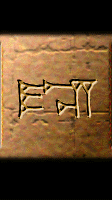
God Bless!
Rene’
Footnotes
1. John Z. Wee, Pan-astronomical Hermeneutics and the Arts of the Lamentation Priest.
2. IBID, 10, 212 obv. 9 – rev. 1. 9–15, (SAA 10,160 obv. 36–45)
3. John Z. Wee, Pan-astronomical Hermeneutics and the Arts of the Lamentation Priest.
4. IBID, Parpola (1983, 8f.)
5. IBID, (BagM Beih. 2, 89, 75, 76, 78, 79, 80, 81–82, 83 and 106; NCBT 1231, Wee 2016b, esp. 182)
6. (Rochberg-Halton, 1988, p. 15, n. 54)
7. John Z. Wee, Pan-astronomical Hermeneutics and the Arts of the Lamentation Priest.
8. IBID, B1 Title of Izbu Tablet I (EBC obv. 5–7)
9. IBID, §B3 Incipit-Title of Izbu Tablet II (LBAT 1601 obv. 3 H–5H // EBC obv. 12–13)
10. Figure 2. picture credit for Coma Decan, p. 39 Witness of the Stars, E.W. Bullinger.
11. Figure 3. picture credit, Axis E on the Dendera Zodiac. The Skies in Memory, John Lash in The Atlantis Blueprint, Wilson & Flem-Ath. p. 171.
12. John Z. Wee, Pan-astronomical Hermeneutics and the Arts of the Lamentation Priest. [C2 Incipit-Title of Sa-gig Tablet II (LBAT 1601 obv. 12 H)]
13. Star Names their Lore and Meaning, p. 341, R.H. Allen
14. Figure 4 picture credit, May 27th, 7 BC Jupiter and Saturn in Conjunction in Pisces, from Starry Night Pro, astronomy software.
15. Figure 5a. picture credit for Cepheus Decan. [https://emmausroadministries.international/2020/06/05/the-real-story-in-the-stars-part-22-cepheus-the-king/]
16. Figure 5b. picture credit for Cepheus Decan. [https://emmausroadministries.international/2020/06/05/the-real-story-in-the-stars-part-22-cepheus-the-king/]
17. Witness of the Stars, p. 152, E.W. Bullinger.
18. John Z. Wee, Pan-astronomical Hermeneutics and the Arts of the Lamentation Priest. Esoteric Babylonian Commentary
19. IBID, Qα Appendix to §Q (EBC rev. 4–5)
20. IBID, Scurlock/Al-Rawi (2006, 371f.)
21. THE HISTORICITY OF THE BIBLE, CHRONOLOGY, ARCHAEOLOGY, ARCHAEOASTRONOMY by Iurii Mosenkis. [ref. a-h]
22. How Orion’s Ability to “Walk upon the Sea” Was Attributed to Jesus: The Astronomical Basis for Christ’s Sea-Walk Miracle, John McHugh, M. A. BYU; Provo, Utah, USA E-mail: jjmchugh72164@comcast.net
23. Ibid, (Toomer, 1998, p. 384; Aratus, 1997, pp. 98-99, 316; Condos, 1997, p. 105)
24. Figure 6a picture credit [Earthsky.org] Fig. 6ab picture credit Eridanus Supervoid. [pinterest.com]
25. How Orion’s Ability to “Walk upon the Sea” Was Attributed to Jesus: The Astronomical Basis for Christ’s Sea-Walk Miracle, John McHugh, M. A. BYU; Provo, Utah, USA E-mail: jjmchugh72164@comcast.net
26. IBID, (Apollodorus, 1967, pp. 30-31, brackets inserted)
27. IBID, (Hesiod, 1977, pp. 70-73; c.f., Aratus, 1997: 118121).
28. Figure 7 picture credit, Witness of the Stars, Book cover, E.W. Bullinger.
29. IBID, Figure 8 picture credit
30. Strong’s Concordance [H7779], James Strong.
31. Biblical Astronomy Newsletter, Bob Wadsworth
32. An Introduction [revised edition] Joseph Campbell.
33. Witness of the Stars, p. 59, E.W. Bullinger.
34. How Orion’s Ability to “Walk upon the Sea” Was Attributed to Jesus: The Astronomical Basis for Christ’s Sea-Walk Miracle, John McHugh, M. A. BYU; Provo, Utah, USA E-mail: Freedman, 1992, I, pp. 472-474)
35. IBID, (McHugh, 2016, pp. 90-94; Hunger & Pingree, 1989, p. 39; CAD 10/pt.1, p. 141; Gossmann, 1950, no. 254; Salonen, 1939, pp. 12-19; ePSD: magur).



























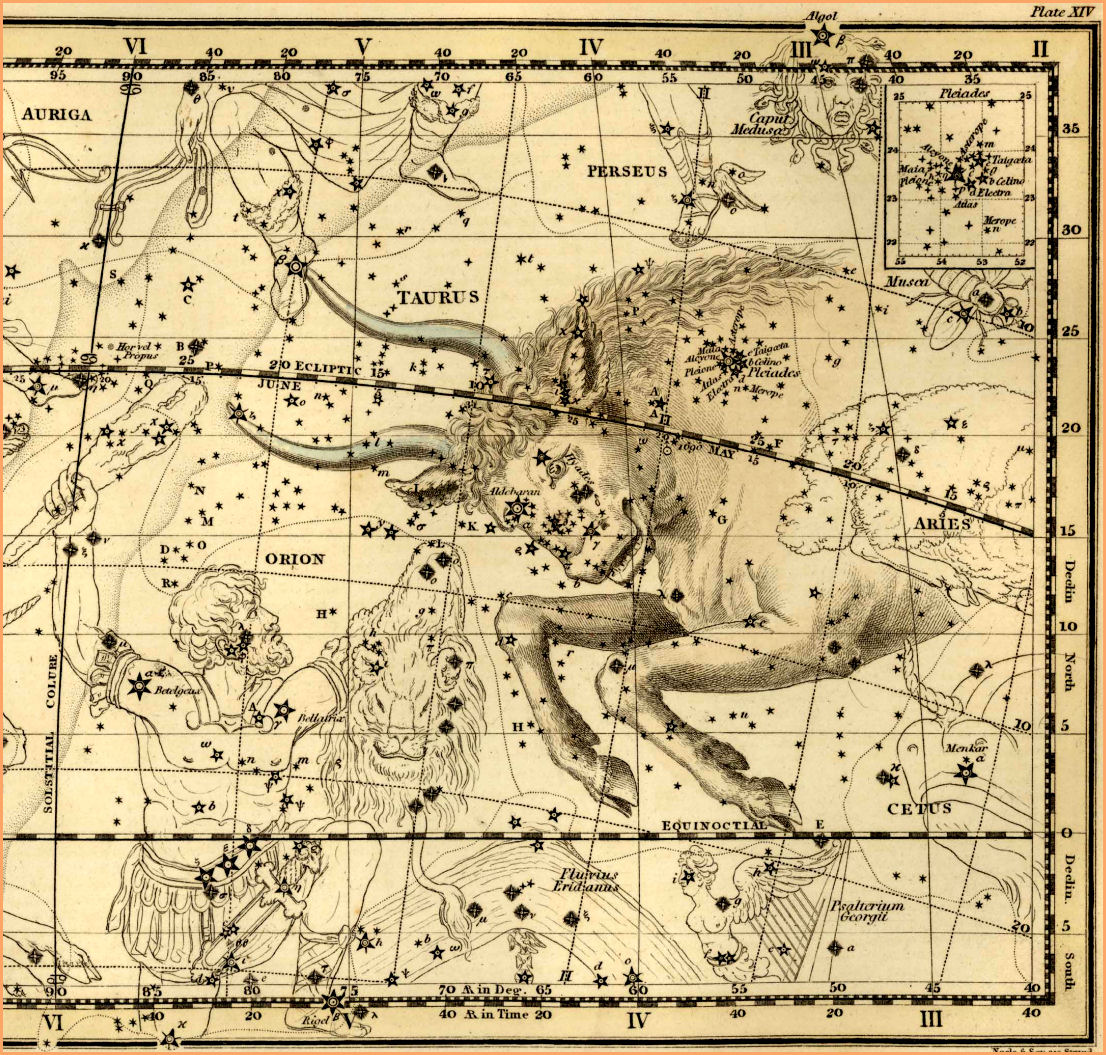


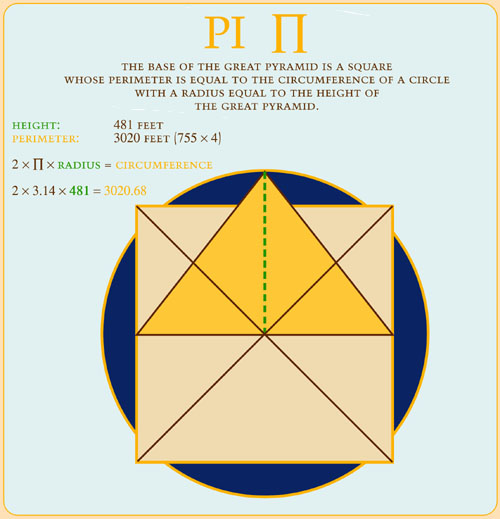
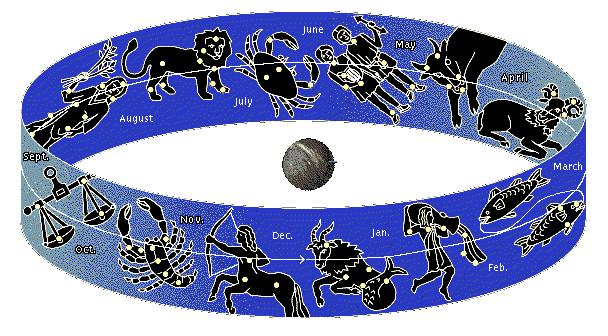
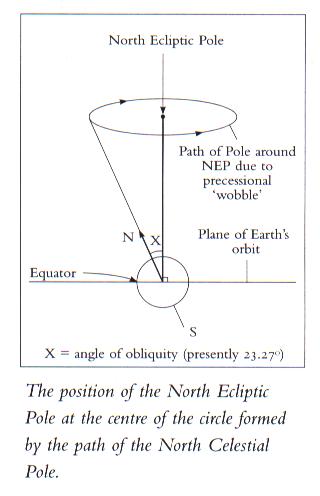
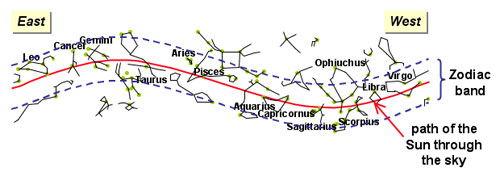



















![Chogha Zanbil [ Dūr Untash Ziggurat ] | Chiyakotravel](https://chiyakotravel.com/wp-content/uploads/2019/05/7-768x480.jpg)

